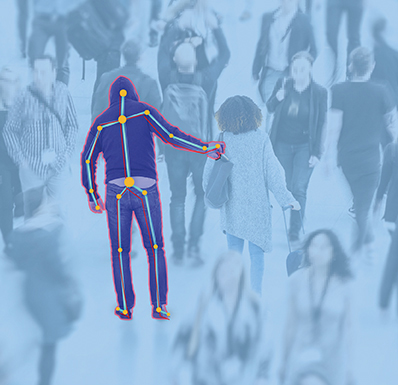2011 -
Privacy and data protection are growing concerns amid increasing process digitalization and in particular capturing of video data. We develop methods that ensure compliance with data protection regulations to alleviate these justified concerns and foster acceptance for such technologies. The underlying idea in our privacy by design approach based on the ”need to know“ principle is for systems to withhold certain information from the user if not needed, or to disclose it only in clearly defined cases. We can make surveillance systems mask certain areas based on the camera’s exact position and line of sight. In medical care use cases where cameras serve strictly to monitor patients, these systems can replace images of marked staff with background images.
Human pose estimation and activity recognition algorithms, paired with digital abstractions of people filmed (see image), could take this a step further in the future. For example, the view of a hospital corridor on the monitor would be blacked out until the algorithm detects a person falling or lying on the floor. Live images of public places streamed to police operation centers could remain pixelated until the system detects suspicious patterns of movement that point to criminal activity.
 Fraunhofer Institute of Optronics, System Technologies and Image Exploitation IOSB
Fraunhofer Institute of Optronics, System Technologies and Image Exploitation IOSB 